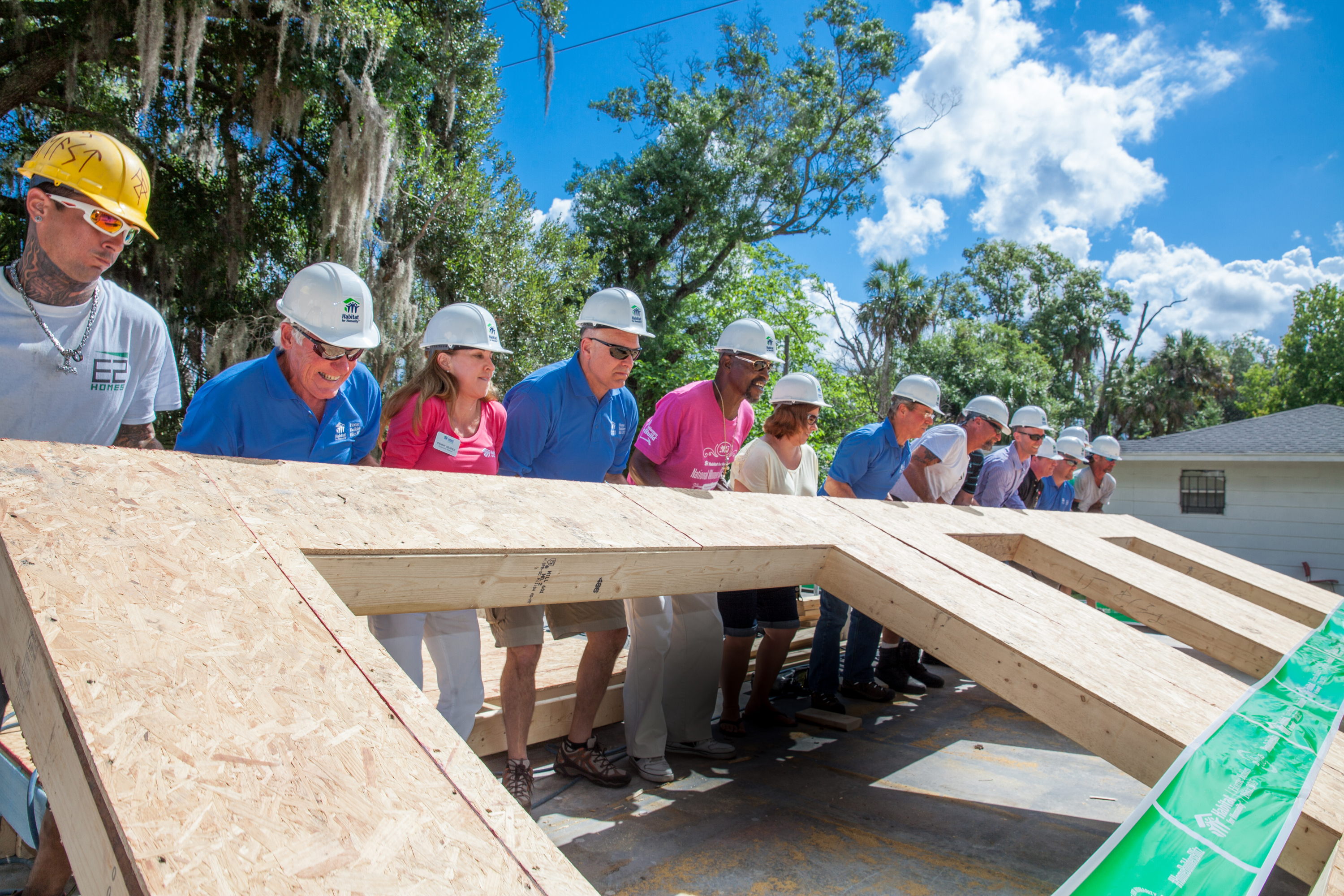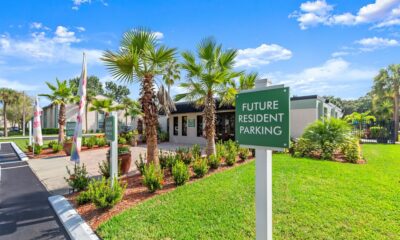Affordable housing: What’s next for St. Pete?

Part three in a series.
The community impact made by Habitat for Humanity is unequivocal. Since 1985, the Pinellas County chapter has built 500 single-family homes in the area, raising the quality of life for thousands of residents who’d been living in conditions ranging from the difficult to the deplorable. People who work, and play, and pay taxes here.
It hasn’t always been easy, Pinellas CEO Mike Sutton explains.
“Any time we go into a neighborhood and put up the sign that we’re building a house, I almost immediately get phone calls,” he says. “And people can be pretty mean. They typically say stuff like ‘we don’t want that trash in our neighborhood,’ ‘it’s going to bring down home values,’ ‘we’ve seen affordable housing, and it doesn’t fit in with the neighborhood.’”
Habitat homes range from 1,200 to 1,600 square feet, and can include up to six bedrooms, depending on family size; always, there’s a one-car garage. “And so we’re really tried to build a product that does fit in,” Sutton adds. “And so depending on where we’re building, we’ll make sure that the home we’re building looks like the rest of the neighborhood. But even better.”
According to a company study, Sutton reports, “the development of Habitat homes actually increases property values in the surrounding area.”
Nevertheless, as St. Petersburg grows, so does its affordable housing crisis.
Approximately one in four residents of the seven-square mile “Community Redevelopment Area” in Midtown and South St. Pete, according to a 2017 city-sponsored report, had annual household income of less than $15,000.
“Some of the housing stock in our community is pretty rough,” admits Sutton. “There’s parts of St. Petersburg that you can drive through and literally pick off every house that needs a new roof.”
Many are, of course, established families, in established homes. Why should they want to leave their neighborhoods? And without any available land to build on anyway, Sutton says, Habitat has begun re-thinking its mission to some degree.
“I think what you’ll see is a lot of rehabilitation of homes. That’s a conversation we’re starting to have. Is new home ownership going to continue to be where we’re focused? Or are we going to start working some rehab homes? Maybe it’s a combination of that.”
Habitat put up 59 Pinellas homes in 2017, making it the second most successful of the organization’s 1,300 American branches, in terms of both competed projects and community support.
In first place – nationally – was Collier County, which includes Naples, one of the wealthiest cities in Florida. But the local Habitat builds on the fringes of Collier, as far away as the town of Imokalee, 30 miles east as the osprey flies.
Naples is tourism-driven, and the support community – those who work in the resorts and the restaurants – simply can’t afford to live there.
Collier’s Habitat branch is particularly well-funded by the Naples community – as if the wealthy are encouraging the physical gap between those of polarized economic status.
Something similar is happening in Pinellas County, where tourism, of course, also takes a big bite of the economic pie. St. Petersburg property values are skyrocketing, forcing nonprofits like Habitat to build in Largo, Clearwater or another of St. Pete’s 20-some neighboring municipalities.
“I don’t think anybody wants to see St. Pete become a city of the haves and have-nots,” says city councilwoman Darden Rice. “That’s why we have to be really smart and strategic as a city to look at what kind of jobs we want to being here, what kind of housing, and making sure that our education system is a high level too.”
Rice, who chairs the Housing, Land Use and Transportation committee, believes the city’s desperate need for affordable housing is just one link in a chain.
“How we tackle affordable housing now has everything to do with what kind of city we’re going to become,” she says. “You know, it’s not mission accomplished on economic development by any means. There is a lot to cheerlead about – it’s exciting, St. Pete is hot, all that is great, but we still have a lot to do in terms of housing and job development.
“My fear is that if we don’t take affordable housing solutions more seriously, we will become a city where only the wealthy can afford to live here. But that doesn’t work in the long run; to be a real community that really works, it has to be a community where everybody can live. And that means our middle class as well.”
If people have to make long commutes to get to their jobs, what’s to stop them from abandoning the community altogether, in the name of convenience?
“If land wasn’t such an issue, we would probably be serving a lot more families,” Sutton explains.
Certain to be at stake in the not-too-distant future: The 86 downtown acres now occupied by Tropicana Field.
“We would love to see the City put a focus on affordable housing with at least a portion of the property,” says Sutton, who (half) jokes that he could fit more than 1,000 Habitat homes on the acreage.
“That property is going to take a combination of economic development, affordable housing and workforce housing in order to really transform downtown St. Petersburg.”
 Sutton is a member of the nonprofit revitalization and community development group Homes Together, along with representatives of Neighborhood Home Solutions, Sustainable Communities, Bright Community Trust and Pathways to Success.
Sutton is a member of the nonprofit revitalization and community development group Homes Together, along with representatives of Neighborhood Home Solutions, Sustainable Communities, Bright Community Trust and Pathways to Success.
They meet regularly to discuss the peaks, valleys and we-shall-overcomes of affordable housing in St. Petersburg. “What the leaders of each organization have come to find out is that by working together, we can achieve so much more,” he says. “We can make a deeper impact. Especially since our missions are so very similar.”
The City, Rice stresses, is committed to looking forward. “Yeah, we’re built out,” she says. “The city does own some land. We do have a role that we can play in assembling vacant land, and we could probably do a better job in working with private and nonprofit developers to bring more affordable housing online.
“And of course the other end of the equation is, what are we doing with our Grow Smarter strategy? What are we doing to make sure that we’re providing jobs that pay well, so that more housing’s affordable? So that people have the right jobs to pay for it?”
Read Part One here
Read Part Two here







